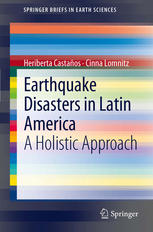

Most ebook files are in PDF format, so you can easily read them using various software such as Foxit Reader or directly on the Google Chrome browser.
Some ebook files are released by publishers in other formats such as .awz, .mobi, .epub, .fb2, etc. You may need to install specific software to read these formats on mobile/PC, such as Calibre.
Please read the tutorial at this link: https://ebookbell.com/faq
We offer FREE conversion to the popular formats you request; however, this may take some time. Therefore, right after payment, please email us, and we will try to provide the service as quickly as possible.
For some exceptional file formats or broken links (if any), please refrain from opening any disputes. Instead, email us first, and we will try to assist within a maximum of 6 hours.
EbookBell Team

0.0
0 reviewsThis book is an attempt to demonstrate the analytical power of the holistic approach for understanding disasters. Six major earthquakes in Latin America are used as an example: the general idea is to place disasters in a broad social and regional context. Understanding disasters is a way of understanding the social system. The idea is to show that every major disaster is unique and different. Statistical methods may be useful for purposes of risk estimation but modern disasters are "systemic" and complex. In the chapter on the 2010 Chile earthquake we discuss the tsunami and why the system of tsunami alert did not work. The introductory chapter contains some basics of seismology (plate tectonics) and earthquake engineering. The 1985 Mexico earthquake describes why geology is important. Why was Mexico City founded in a lake? Technology must be adapted to the environment, not "imported" from possibly more advanced but different societies. The 1970 Peru earthquake is an example of disaster in a unique environment. Caracas 1967 takes us on a survey of different engineering solutions. And the 1960 Chile earthquake leads us on a retrospective survey--what has changed in Chile between the two major Chile earthquakes? A discussion on Charles Darwin’s observations of the 1835 Chile earthquake provides a fitting summary.